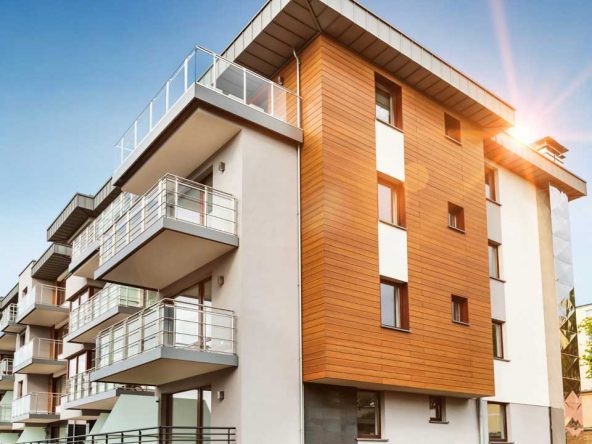The growing population and limited land resources have allowed Kenyan real estate to expand vertically. As a result, high-rise buildings are being developed in many parts of the country, with residential and commercial buildings reaching as high as 30 stories. While many people may find the idea of living on higher floors appealing, those who prefer to live closer to the ground may not.
What are high-rise buildings?
High-rises are tall buildings with many floors designed to be much taller than the surrounding buildings. They are typically found in densely populated urban areas where space is limited and the demand for office, residential, or commercial space is high. High-rises are typically constructed with a steel or reinforced concrete frame, and they feature many amenities, such as elevators, air conditioning, and state-of-the-art security systems. For instance, glass skyscraper pools can be found in many such buildings. The term high-rise originally referred to buildings that were at least ten stories tall, but today, the term is generally used to describe any building that is significantly taller than its surrounding structures.
How They Work
High-rise buildings are enclosed by curtain walls; these are non-load-bearing sheets of glass, masonry, stone, or metal that are affixed to the building’s frame through a series of vertical and horizontal members called mullions and muntin. The principal means of vertical transport in a high-rise is the elevator. It is moved by an electric motor that raises or lowers the cab in a vertical shaft utilizing wire ropes. Each elevator cab is also engaged by vertical guide tracks and has a flexible electric cable connected to it that provides power for lighting, door operation, and signal transmission.
Because of their height and their large occupant populations, high-rises require the careful provision of life-safety systems. Fire-prevention standards should be strict, and provisions for adequate means of egress in case of fire, power failure, or other accidents should be provided. Although originally designed for commercial purposes, many high-rises are now planned for multiple uses. The combination of office, residential, retail, and hotel space is common.
Legislative Framework
In Kenya, several laws have been passed to enable the regulation of buildings, from their initial siting through to their decommissioning. It is important to note that a number of these laws are currently under review as part of the Government’s devolution process The Kenyan government’s commitment to sustainable construction is reflected in its legislative frameworks such as the Environmental Management and Coordination Act (EMCA) 1999 advocate for sustainable resource use and energy efficiency. These regulations underscore the importance of adopting construction practices that are environmentally responsible and sustainable.
In 2024, Nairobi Governor Johnson Sakaja removed restrictions on the height of buildings in Nairobi, citing the need to accommodate the city’s expected population growth to 10.5 million by 2050 within its limited geographical area. This policy change allows construction of up to 25 floors and potentially up to 75 floors in specific zones, aiming to support the city’s Affordable Housing Programme and efficient use of urban space. Previously, areas near Eastleigh airbase had restrictions to facilitate quick evacuations, which Sakaja argued are no longer feasible due to increased traffic. The removal of these height limits has led to concerns about the impact on infrastructure and the transformation of residential neighbourhoods into dense high-rise areas.
Pros and Cons
Just like any living situation, high-rise living comes with its own set of advantages and challenges. The advantages include but are not limited to; space optimisation, security and privacy, amenities galore and convenience and accessibility. On the other hand, the disadvantages encompass limited outdoor space, noise and crowds, high elevator dependency, owner’s corporation fees, etc.
Solutions and Recommendations
To overcome the challenges associated with high-rise buildings, a multifaceted approach is needed. Education and awareness campaigns can help demystify the cons, highlighting their benefits and promoting wider acceptance. Providing/creating such awareness is informative to investors about whether or not to invest in high-rises. Increasing protective measures in high-rises is also a feasible solution which can encourage more interest in high-rises, otherwise, the said interest or investments would be doomed.
Conclusion
High-rise buildings are great to live in. They provide excellent amenities, facilities and comfort to people. You get to enjoy plenty of natural light, ventilation as well as fresh air. The connectivity and security will surely make you invest in these high-rises. However, they do come with a range of drawbacks starting from high maintenance, low resale value, waiting for elevators and many more.
Disclaimer:
Please note that the information provided in this article is for general informational purposes only and should not be construed as legal advice. It is always advisable to consult with a qualified legal professional to discuss your specific circumstances and obtain tailored legal counsel.





